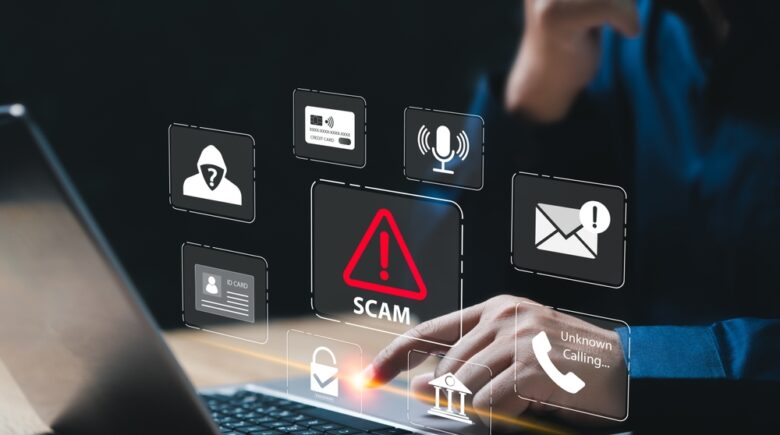Table of Contents
Financial scams continue to evolve in sophistication, targeting consumers across demographics and financial backgrounds. Criminals leverage technology, social engineering, and psychological tactics to deceive individuals and gain unauthorized access to their assets. This article provides a comprehensive guide to recognizing, preventing, and responding to financial scams. By understanding common schemes, identifying early warning signs, and implementing practical protection strategies, you can safeguard your money and financial well-being.
Understanding Financial Scams
Financial scams encompass a wide range of deceptive practices designed to extract money or personal information from unsuspecting victims. Scammers may pose as representatives from legitimate institutions, exploit urgent scenarios, or promise unrealistic returns. Common objectives include:
- Unauthorized access to bank or investment accounts
- Theft of personal identifying information
- Direct monetary transfers through wire services or gift cards
Awareness of how and why scams occur is the first step toward effective defense. Scammers often exploit trust, fear, or the allure of quick profits, making it essential to remain vigilant and critically evaluate unsolicited communications.
Common Types of Scams
Impersonation and Phishing
Impersonation schemes involve scammers posing as banks, government agencies, or well-known companies. Phishing attempts frequently arrive via email or text message, directing recipients to fake websites that harvest login credentials or payment information. Spoofed caller ID numbers and urgent language add to the illusion of legitimacy.
Investment Fraud
Investment scams promise high returns with little or no risk. Ponzi schemes, pyramid schemes, and unregistered securities offerings prey on investors eager for above-market gains. Fraudsters may provide falsified performance data and pressure victims to recruit additional participants.
Tech Support and Ransomware Extortion
In tech support scams, perpetrators contact individuals claiming that their computer is infected or compromised. They request remote access or payment for unnecessary repairs, often installing malware or ransomware. Victims may lose files or endure repeated extortion attempts.
Romance and Social Media Scams
Romance scams develop through social media or dating platforms, where scammers build emotional rapport before requesting financial assistance for fabricated emergencies. Likewise, fraudulent social media advertisements and “influencer” pitches can lure individuals into counterfeit investment or shopping schemes.
Early Warning Signs
Unsolicited Contact
Unexpected calls, messages, or emails claiming to be from reputable institutions should raise suspicion. Legitimate organizations seldom initiate contact without prior engagement, and they rarely demand immediate payment or personal data through unsecure channels.
Pressure to Act Quickly
Scammers create a false sense of urgency by threatening account closure, legal action, or missed deadlines. Requests to transfer funds immediately or to purchase gift cards for payment are clear red flags.
Requests for Unusual Payment Methods
Legitimate businesses and government agencies accept standard payment forms—credit cards, checks, or direct debits. Demands for wire transfers, cryptocurrency, prepaid cards, or gift cards often indicate fraudulent intent.
Inconsistencies and Errors
Misspellings, grammatical mistakes, and mismatched email domains betray phishing and impersonation attempts. Review URLs carefully and verify that domain names correspond exactly to the organization in question.
Effective Protection Strategies
Secure Your Personal Information
Maintain strong, unique passwords for each online account, using a reputable password manager. Enable multi-factor authentication wherever available to add an extra layer of security. Regularly review account statements for unauthorized transactions, and freeze credit reports if suspicious activity arises.
Verify Before You Trust
Before responding to any unsolicited communication:
- Contact the institution directly using verified contact information from official websites or account statements.
- Avoid clicking links or downloading attachments from unknown senders.
- Look up the organization’s customer support number independently rather than relying on contact details provided in the message.
Educate Yourself and Others
Stay informed about emerging scams by following updates from consumer protection agencies. Share knowledge with family members—particularly seniors and young adults, who may be more vulnerable—to ensure they recognize warning signs and know how to respond.
Use Technology Wisely
Install reputable antivirus and anti-malware software on all devices. Keep operating systems, web browsers, and applications up to date to patch security vulnerabilities. Consider enabling spam filters for email and call-blocking tools for mobile phones.
Responding to Suspected Scams
Halt All Communication
If you suspect a scam, cease responding immediately. Do not provide additional information or make payments. Block phone numbers, email addresses, and social media profiles to prevent further contact.
Report to Authorities
Filing a complaint helps authorities track scam patterns and protect other consumers. Report incidents to:
- Federal Trade Commission (FTC) via ReportFraud.ftc.gov
- Internet Crime Complaint Center (IC3) at www.ic3.gov
- Your state or local consumer protection office
Institutions such as banks or credit card companies may also offer fraud hotlines; notify them to initiate transaction reversals and account monitoring.
Recover and Rebuild
After reporting, monitor credit reports and financial statements closely. Place fraud alerts or security freezes on credit files to prevent unauthorized account openings. If you have transferred funds via wire or prepaid cards, contact the payment provider promptly—recovery options may be limited but acting quickly improves chances of reimbursement.
Case Study: Averted Tech Support Scam
A consumer received a pop-up warning about a critical virus on their computer, with a displayed support number. Suspecting fraud, they contacted the computer manufacturer’s official support line, which confirmed no such alert was issued. The consumer avoided paying for unnecessary “repairs” and reported the incident to the FTC, contributing to the identification of a widespread tech support fraud ring.
Conclusion
Financial scams continue to pose significant risks, but informed consumers can effectively protect themselves and their assets. By recognizing common schemes, adhering to secure practices, and responding decisively to suspicious contacts, you reduce the likelihood of falling victim to fraud. Continue to stay vigilant, educate those around you, and leverage available resources to ensure your financial security.
References
- Federal Trade Commission. Protecting Yourself from Fraud. https://www.ftc.gov › consumer-protection › guides [Accessed June 2025].
- Investopedia. Common Financial Scams and How to Avoid Them. https://www.investopedia.com › articles › personal-finance [Accessed June 2025].
- Better Business Bureau. Scam Tracker: Identify and Protect Against Fraud. https://www.bbb.org › scamtracker [Accessed June 2025].
Table of Contents
Financial scams continue to evolve in sophistication, targeting consumers across demographics and financial backgrounds. Criminals leverage technology, social engineering, and psychological tactics to deceive individuals and gain unauthorized access to their assets. This article provides a comprehensive guide to recognizing, preventing, and responding to financial scams. By understanding common schemes, identifying early warning signs, and implementing practical protection strategies, you can safeguard your money and financial well-being.
Understanding Financial Scams
Financial scams encompass a wide range of deceptive practices designed to extract money or personal information from unsuspecting victims. Scammers may pose as representatives from legitimate institutions, exploit urgent scenarios, or promise unrealistic returns. Common objectives include:
- Unauthorized access to bank or investment accounts
- Theft of personal identifying information
- Direct monetary transfers through wire services or gift cards
Awareness of how and why scams occur is the first step toward effective defense. Scammers often exploit trust, fear, or the allure of quick profits, making it essential to remain vigilant and critically evaluate unsolicited communications.
Common Types of Scams
Impersonation and Phishing
Impersonation schemes involve scammers posing as banks, government agencies, or well-known companies. Phishing attempts frequently arrive via email or text message, directing recipients to fake websites that harvest login credentials or payment information. Spoofed caller ID numbers and urgent language add to the illusion of legitimacy.
Investment Fraud
Investment scams promise high returns with little or no risk. Ponzi schemes, pyramid schemes, and unregistered securities offerings prey on investors eager for above-market gains. Fraudsters may provide falsified performance data and pressure victims to recruit additional participants.
Tech Support and Ransomware Extortion
In tech support scams, perpetrators contact individuals claiming that their computer is infected or compromised. They request remote access or payment for unnecessary repairs, often installing malware or ransomware. Victims may lose files or endure repeated extortion attempts.
Romance and Social Media Scams
Romance scams develop through social media or dating platforms, where scammers build emotional rapport before requesting financial assistance for fabricated emergencies. Likewise, fraudulent social media advertisements and “influencer” pitches can lure individuals into counterfeit investment or shopping schemes.
Early Warning Signs
Unsolicited Contact
Unexpected calls, messages, or emails claiming to be from reputable institutions should raise suspicion. Legitimate organizations seldom initiate contact without prior engagement, and they rarely demand immediate payment or personal data through unsecure channels.
Pressure to Act Quickly
Scammers create a false sense of urgency by threatening account closure, legal action, or missed deadlines. Requests to transfer funds immediately or to purchase gift cards for payment are clear red flags.
Requests for Unusual Payment Methods
Legitimate businesses and government agencies accept standard payment forms—credit cards, checks, or direct debits. Demands for wire transfers, cryptocurrency, prepaid cards, or gift cards often indicate fraudulent intent.
Inconsistencies and Errors
Misspellings, grammatical mistakes, and mismatched email domains betray phishing and impersonation attempts. Review URLs carefully and verify that domain names correspond exactly to the organization in question.
Effective Protection Strategies
Secure Your Personal Information
Maintain strong, unique passwords for each online account, using a reputable password manager. Enable multi-factor authentication wherever available to add an extra layer of security. Regularly review account statements for unauthorized transactions, and freeze credit reports if suspicious activity arises.
Verify Before You Trust
Before responding to any unsolicited communication:
- Contact the institution directly using verified contact information from official websites or account statements.
- Avoid clicking links or downloading attachments from unknown senders.
- Look up the organization’s customer support number independently rather than relying on contact details provided in the message.
Educate Yourself and Others
Stay informed about emerging scams by following updates from consumer protection agencies. Share knowledge with family members—particularly seniors and young adults, who may be more vulnerable—to ensure they recognize warning signs and know how to respond.
Use Technology Wisely
Install reputable antivirus and anti-malware software on all devices. Keep operating systems, web browsers, and applications up to date to patch security vulnerabilities. Consider enabling spam filters for email and call-blocking tools for mobile phones.
Responding to Suspected Scams
Halt All Communication
If you suspect a scam, cease responding immediately. Do not provide additional information or make payments. Block phone numbers, email addresses, and social media profiles to prevent further contact.
Report to Authorities
Filing a complaint helps authorities track scam patterns and protect other consumers. Report incidents to:
- Federal Trade Commission (FTC) via ReportFraud.ftc.gov
- Internet Crime Complaint Center (IC3) at www.ic3.gov
- Your state or local consumer protection office
Institutions such as banks or credit card companies may also offer fraud hotlines; notify them to initiate transaction reversals and account monitoring.
Recover and Rebuild
After reporting, monitor credit reports and financial statements closely. Place fraud alerts or security freezes on credit files to prevent unauthorized account openings. If you have transferred funds via wire or prepaid cards, contact the payment provider promptly—recovery options may be limited but acting quickly improves chances of reimbursement.
Case Study: Averted Tech Support Scam
A consumer received a pop-up warning about a critical virus on their computer, with a displayed support number. Suspecting fraud, they contacted the computer manufacturer’s official support line, which confirmed no such alert was issued. The consumer avoided paying for unnecessary “repairs” and reported the incident to the FTC, contributing to the identification of a widespread tech support fraud ring.
Conclusion
Financial scams continue to pose significant risks, but informed consumers can effectively protect themselves and their assets. By recognizing common schemes, adhering to secure practices, and responding decisively to suspicious contacts, you reduce the likelihood of falling victim to fraud. Continue to stay vigilant, educate those around you, and leverage available resources to ensure your financial security.
References
- Federal Trade Commission. Protecting Yourself from Fraud. https://www.ftc.gov › consumer-protection › guides [Accessed June 2025].
- Investopedia. Common Financial Scams and How to Avoid Them. https://www.investopedia.com › articles › personal-finance [Accessed June 2025].
- Better Business Bureau. Scam Tracker: Identify and Protect Against Fraud. https://www.bbb.org › scamtracker [Accessed June 2025].







